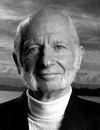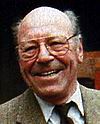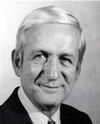Nobel price for physics in 1989
Dalsi-
 Hans Georg Dehmelt (1922) German-born American physicist who shared one-half of the Nobel Prize for Physics in 1989 with the German physicist Wolfgang Paul. (The other half of the prize was awarded to the American physicist Norman F. Ramsey.) Dehmelt received his share of the prize for his development of the Penning trap, an electromagnetic device that can hold small numbers of ions (electrically charged atoms) and electrons for periods of time long enough to allow their properties to be studied with unprecedented accuracy. Dehmelt served in the German army from 1940 until he was captured by U.S. forces in 1945. Having studied physics during the war under an army technical program, he resumed his studies thereafter at the University of Gottingen, graduating with a doctoral degree in physics in 1950. He went to the United States in 1952 and began teaching at the University of Washington in 1955. He became a full professor there in 1961, the year in which he also became a U.S. citizen. Dehmelt's Penning trap, which he developed in 1955, can confine electrons and ions in a small space for long periods of time in relative isolation. In 1973 Dehmelt used his device to isolate a single electron for observation, an unprecedented feat that opened the way for the precise measurement of key properties of electrons. Dehmelt and his colleagues went on to develop methods for measuring atomic frequencies and individual quantum jumps (the transitions between atomic energy levels) with unprecedented precision. In the 1970s Dehmelt used his trap to measure an electron's magnetic moment to an accuracy of four parts in a trillion, the most precise measurement of that quantity at the time.  Wolfgang Paul (1913 - 1993) German physicist who shared one-half of the Nobel Prize for Physics in 1989 with the German-born American physicist Hans G. Dehmelt. (The other half of the prize was awarded to the American physicist Norman F. Ramsey.) Paul received his share of the prize for his development of the Paul trap--an electromagnetic device that captures ions (electrically charged atoms) and holds them long enough for their properties to be accurately measured. Paul studied at technological institutes in Munich and Berlin and received a doctoral degree in physics from the Technical University in Berlin in 1939. He became a lecturer at the University of Gottingen in 1944 and was a full professor there from 1950. From 1952 he also taught at the University of Bonn. The Paul trap, which he developed in the 1950s, used a radio-frequency current to maintain an alternating electric field that isolates and confines charged particles and atoms in a small space. The Paul trap allowed physicists to study atomic properties and test physical theories with high degrees of precision and became an important tool in modern spectroscopy. Paul also invented a way of separating ions of different masses and storing them in the Paul trap, using a principle that was subsequently widely applied in modern spectrometers.  Norman Foster Ramsey (1915) American physicist who received one-half of the Nobel Prize for Physics in 1989 for his development of a technique to induce atoms to shift from one specific energy level to another. (The other half of the prize was awarded to Wolfgang Paul and Hans Georg Dehmelt.) Ramsey's innovation, called the separated oscillatory fields method, found application in the precise measurement of time and frequency. Ramsey studied physics at Columbia University, N.Y., and received a Ph.D. degree there in 1940. He also earned a D.Sc. degree from the University of Cambridge in 1954. After teaching at various American universities in the 1940s, he taught at Harvard University from 1947, becoming Higgins professor of physics there in 1966. In 1949 Ramsey perfected a method to study the structure of atoms by sending them through two separate oscillating electromagnetic fields. The rapid energy-level transitions thereby induced in a beam of atoms produced an interference pattern that could provide important data about the structure and behaviour of atoms. When synchronized with a microwave oscillator, the atoms' oscillations could also be used to measure the passage of time with extreme accuracy, thus providing the basis for the modern cesium atomic clock, which sets present time standards. In the 1950s Ramsey helped develop the hydrogen maser, a microwave-emitting relative of the laser.
All text is available under the terms of the GNU Free Documentation License. Timeline of Nobel Prize Winners is not affiliated with The Nobel Foundation. External sites are not endorsed or supported by http://www.nobel-winners.com/ Copyright © 2003 All Rights Reserved.
| | ||||